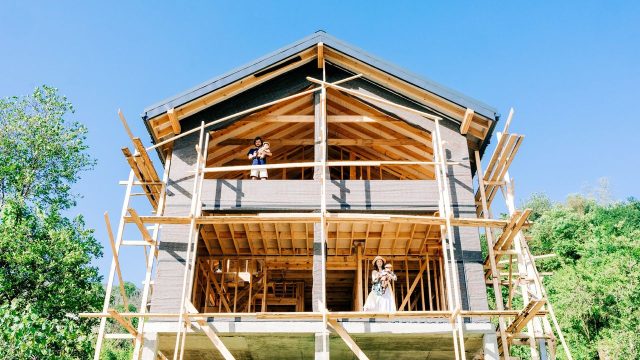
Moving into a brand new house — maybe even one that you can customize to your liking — may sound like an ideal homebuying experience. Repairs and maintenance needs are likely minimal, and you will not have to deal with the wear and tear from previous owners, or their design choices.
But purchasing a new build can also bring headaches of its own, though different ones than you may find when buying an existing home. Before signing on to buy a home still under construction, it is important to weigh the drawbacks against the advantages to ensure it is the right move for you, both literally and figuratively speaking.
What are the upsides of buying a newly constructed home?
Arguably, the biggest benefit of a new build is the fact that it is new. Unlike with an existing home, “you will be the first person to live there, the first person to use the appliances, flip the light switches, etc.,” said Bankrate. There is even a chance you will have picked them all out yourself, if your new build allows for customization.
Plus, there is no need for repairs or renovations at move-in, or for a while going forward. Since everything is brand new, “maintenance costs (and time) should remain at a minimum for at least the first few years,” said Realtor.com. You may even end up saving on energy bills, as “new homes often feature the latest energy-efficient systems and materials,” said Ramsey Solutions, a personal finance blog.
To further sweeten the deal, “some builders offer incentives to attract buyers,” like “free upgrades on home appliances or building materials, mortgage rate buydowns or a credit toward your closing costs,” said Homes.com. You may even get access to “special loan options or a lender credit if the builder works with a specific mortgage company.”
What drawbacks do new builds have?
While new builds can offer the cost-saving opportunities mentioned above, you may end up paying more for the house itself. “The median price of an existing U.S. home in February 2025 was $398,400, while the price of a new home that same month was $439,000,” said Zillow. Plus, there typically is not “much leeway on closing costs or purchase price with a newly built home,” said Ramsey Solutions.
And while choosing every last detail of your home may sound exciting initially, “it’s easy to get overwhelmed by all the choices out there,” said Bankrate. Not to mention, customization and upgrades can tack on money — and time — to the process, which can already drag on if a home is under construction.
Should you buy an existing home instead?
Moving into an existing home can be easier upfront. The house is ready for you to move into, and you may face lower costs, as well as a greater likelihood of negotiating. Plus, while you will not get to choose everything, “older homes are more likely to have architectural details that would be hard and expensive to replicate,” not to mention “they also sometimes have great stories behind them,” said Zillow.
That said, depending on the existing home, you may face additional challenges after move-in. It is more likely there will be repairs and updates to contend with, even if you did not buy a fixer-upper. The cost and chaos of renovations may also apply if there are design elements or features you decide to revamp.
Repairs and maintenance will be minimal on a brand new build — but moving into an existing home can be easier upfront






